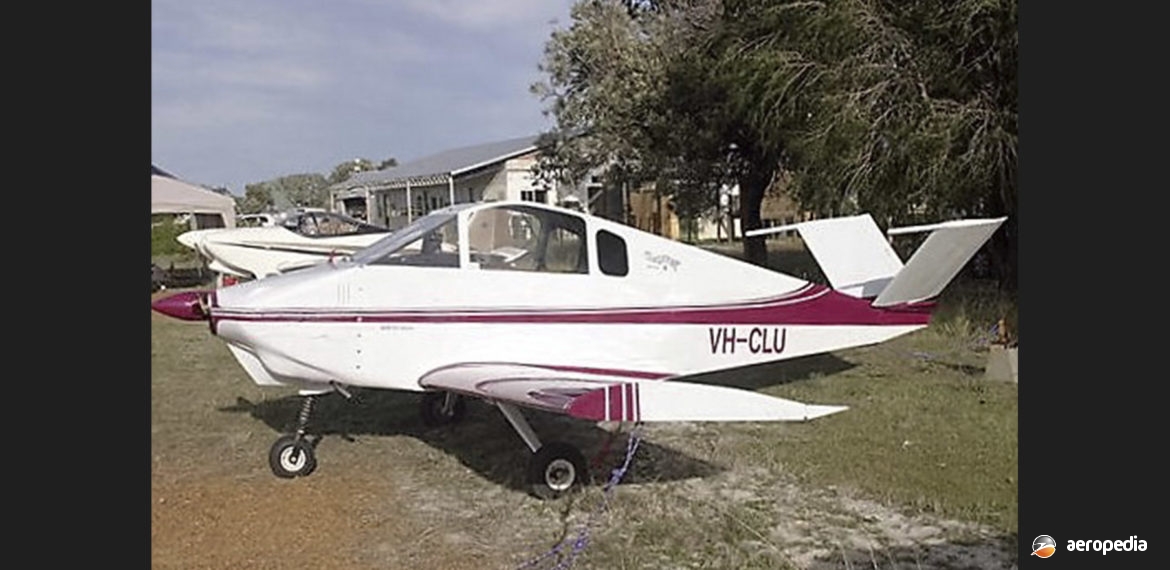Photograph:
Davis DA-2 VH-CLU (c/n W86) at Serpentine, WA (unknown)
Country of origin:
United States of America
Description:
Two-seat light homebuilt sport monoplane
Power Plant:
One 48 kw (65 hp) Continental A65-8 four-cylinder horizontally-opposed air-cooled engine
Specifications:
Length: 5.44 m (17 ft 10¼ in)
Height: 1.65 m (5 ft 5 in)
Wing area: 7.66 m² (82.5 sq ft)
Max speed at sea level: 193 km/h (120 mph)
Cruising speed: 185 km/h (115 mph)
Stalling speed: 100 km/h (62 mph)
Initial rate of climb: 122 m/min (400 ft/min)
Ceiling: 3,048 (10,000 ft)
Range: 724 km (450 miles)
Empty weight: 277 kg (610 lb)
Loaded weight: 510 kg (1,125 lb)
History:
The Davis DA-2 was a two-seat side-by-side low-wing sport monoplane, fitted with an all-moving Vee-tail, having an included angle of 100 degrees. Powered by a 48 kw (65 hp) Continental A65-8 engine, the prototype made its first flight on 21 May 1966 and later, at the Experimental Aircraft Association annual fly-in at Oshkosh in Wisconsin, USA, won awards for the Most Outstanding Design and Most Popular Aircraft. Subsequently plans were made available to amateur constructors by the distributor in Stanton, Texas.
The wing was of constant chord and consisted of flanged metal spars, pressed metal ribs and aluminium alclad skin. The fuselage was made up of 1.5 cm (⅝ in) square chrome-molybdenum steel tube to which the side skins were attached by rivets. A child’s seat could be fitted in the baggage area at the rear of the cabin. Power plants ranging from 48 kw (65 hp) to 75 kw (100 hp) could be fitted, and a fixed tricycle undercarriage was standard.
Construction of a couple has occurred in Australia over the years. Registrations VH-LCU and VH-FRY were reserved at one stage but VH-CLU (c/n W86) was the first completed, being registered in June 1997 in Western Australia.
It is known at least two DA-2A kits were imported to New Zealand in the 1980s but these do not seem to have been completed.

